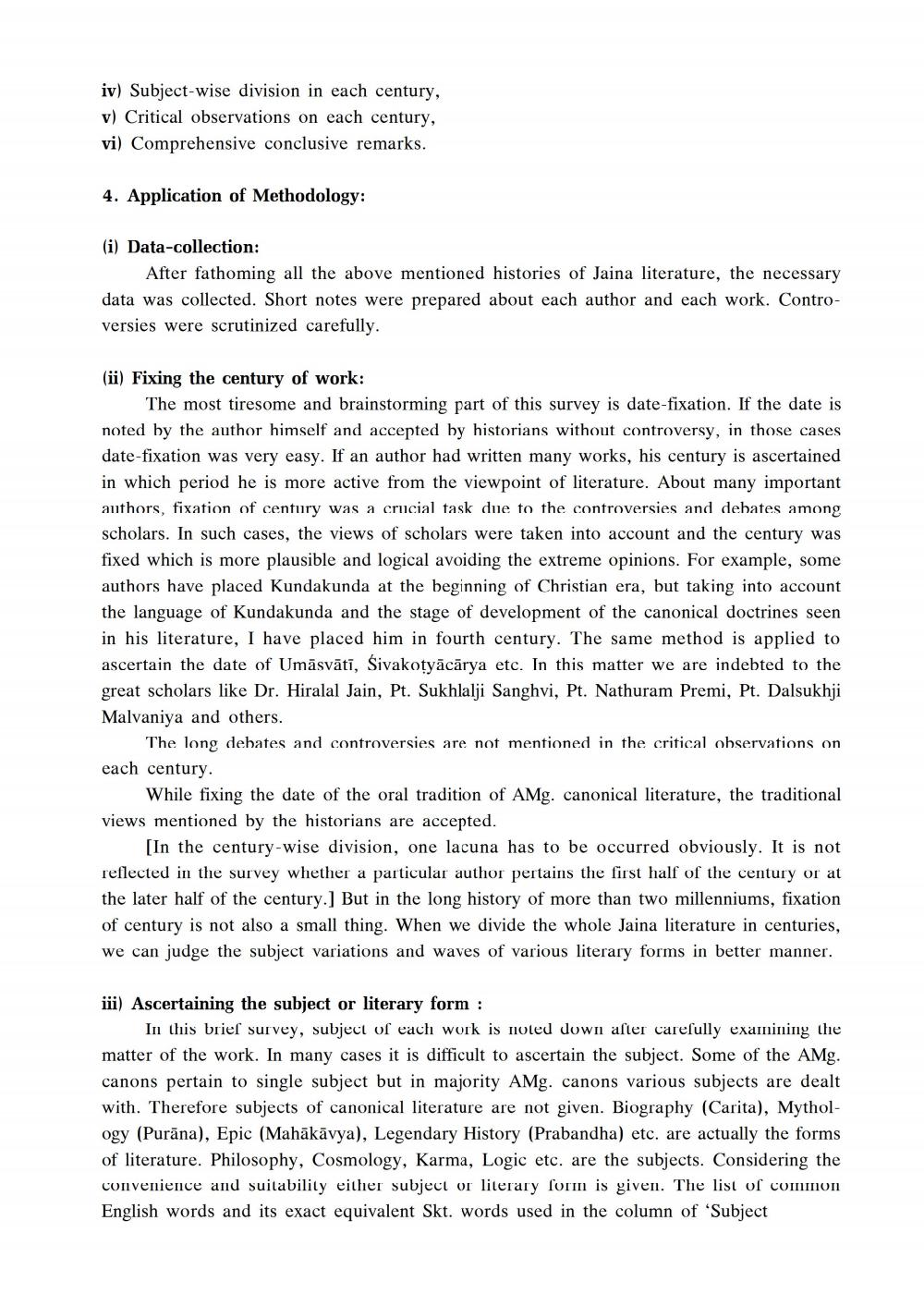Book Title: Brief Survey of Jaina Prakrit and Sanskrit Literature Part 1 Author(s): Nalini Joshi Publisher: Sanmati Tirth Prakashan Pune View full book textPage 8
________________ iv) Subject-wise division in each century, v) Critical observations on each century, vi) Comprehensive conclusive remarks. 4. Application of Methodology: (i) Data-collection: After fathoming all the above mentioned histories of Jaina literature, the necessary data was collected. Short notes were prepared about each author and each work. Controversies were scrutinized carefully. (ii) Fixing the century of work: The most tiresome and brainstorming part of this survey is date-fixation. If the date is noted by the author himself and accepted by historians without controversy, in those cases date-fixation was very easy. If an author had written many works, his century is ascertained in which period he is more active from the viewpoint of literature. About many important authors, fixation of century was a crucial task due to the controversies and debates among scholars. In such cases, the views of scholars were taken into account and the century was fixed which is more plausible and logical avoiding the extreme opinions. For example, some authors have placed Kundakunda at the beginning of Christian era, but taking into account the language of Kundakunda and the stage of development of the canonical doctrines seen in his literature, I have placed him in fourth century. The same method is applied to ascertain the date of Umāsvāti, Sivakoțyācārya etc. In this matter we are indebted to the great scholars like Dr. Hiralal Jain, Pt. Sukhlalji Sanghvi, Pt. Nathuram Premi, Pt. Dalsukhji Malvaniya and others. The long debates and controversies are not mentioned in the critical observations on each century. While fixing the date of the oral tradition of Amg. canonical literature, the traditional views mentioned by the historians are accepted. [In the century-wise division, one lacuna has to be occurred obviously. It is not reflected in the survey whether a particular author pertains the first half of the century or at the later half of the century.] But in the long history of more than two millenniums, fixation of century is not also a small thing. When we divide the whole Jaina literature in centuries, we can judge the subject variations and waves of various literary forms in better manner. iii) Ascertaining the subject or literary form: In this brief survey, subject of each work is noted down after carefully examining the matter of the work. In many cases it is difficult to ascertain the subject. Some of the AMg. canons pertain to single subject but in majority AMg. canons various subjects are dealt with. Therefore subjects of canonical literature are not given. Biography (Carita), Mythology (Purāna), Epic (Mahākāvya), Legendary History (Prabandha) etc. are actually the forms of literature. Philosophy, Cosmology, Karma, Logic etc. are the subjects. Considering the convenience and suitability either subject or literary form is given. The list of common English words and its exact equivalent Skt. words used in the column of 'SubjectPage Navigation
1 ... 6 7 8 9 10 11 12 13 14 15 16 17 18 19 20 21 22
